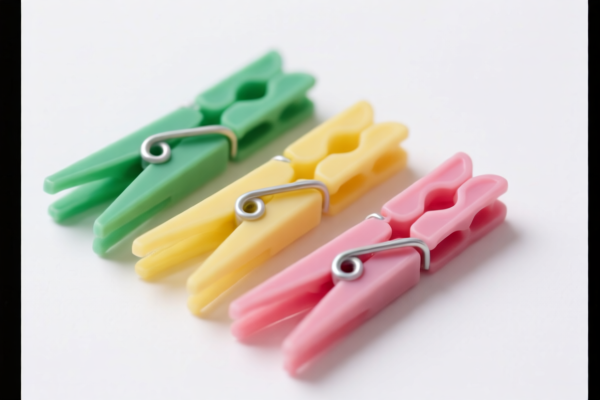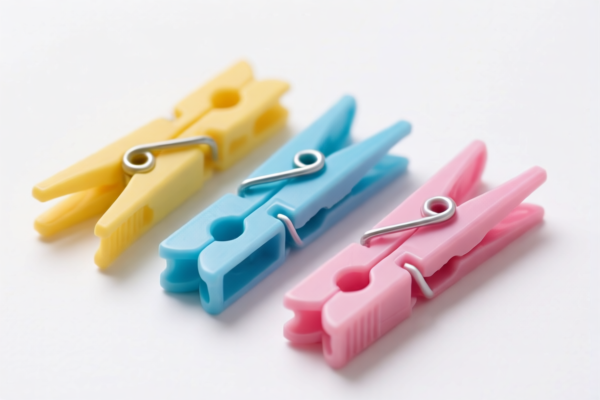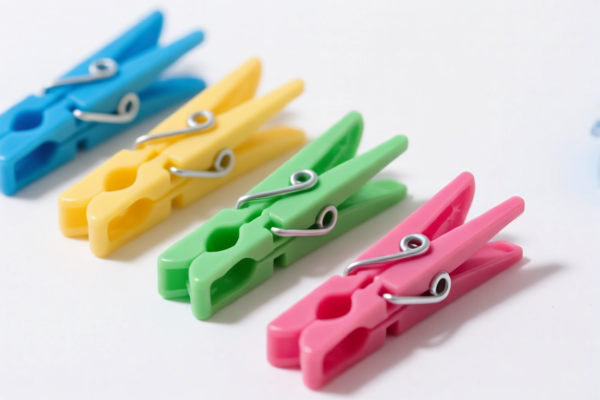| HS Code | Official Doc | Tariff Rate | Origin | Destination | Effective Date |
|---|---|---|---|---|---|
| 7317006530 | Doc | 80.0% | CN | US | 2025-05-12 |
| 7317007500 | Doc | 80.0% | CN | US | 2025-05-12 |
| 8305906000 | Doc | 43.2% | CN | US | 2025-05-12 |
| 8305903010 | Doc | 30.0% | CN | US | 2025-05-12 |
| 7326908605 | Doc | 82.9% | CN | US | 2025-05-12 |
| 7326908635 | Doc | 82.9% | CN | US | 2025-05-12 |
| 7415100000 | Doc | 57.5% | CN | US | 2025-05-12 |
| 7415390000 | Doc | 58.0% | CN | US | 2025-05-12 |
| 8306100000 | Doc | 35.8% | CN | US | 2025-05-12 |
| 8306290000 | Doc | 30.0% | CN | US | 2025-05-12 |




Metal Pegs
Metal pegs are fasteners or supports typically cylindrical in shape, constructed from various metals, used to join or secure objects. They function by friction or interference fit within a hole, or through the use of additional securing mechanisms.
Material
Metal pegs are manufactured from a diverse range of metals selected based on required strength, corrosion resistance, and cost. Common materials include:
- Steel: Offers high strength and is frequently used in construction and engineering applications. Often coated (zinc, cadmium, chrome) for corrosion protection.
- Stainless Steel: Provides excellent corrosion resistance and is suitable for outdoor or wet environments.
- Aluminum: Lightweight and corrosion-resistant, ideal for applications where weight is a concern.
- Brass: Corrosion resistant and often used in decorative or electrical applications.
- Titanium: High strength-to-weight ratio and exceptional corrosion resistance, used in specialized applications.
Purpose
The primary purpose of metal pegs is to:
- Fasten: Connect two or more objects together.
- Support: Provide structural support or maintain spacing.
- Position: Accurately locate or align components.
- Secure: Prevent movement or separation of parts.
Function
Metal pegs function through several mechanisms:
- Friction Fit: The peg is slightly larger than the hole, creating a tight interference fit that resists removal.
- Shear Strength: The peg resists forces applied perpendicular to its axis.
- Tension Resistance: The peg resists forces attempting to pull it out of the hole.
- Locking Mechanisms: Some pegs incorporate features like threads, flanges, or locking heads to enhance security.
Usage Scenarios
Metal pegs are employed in a wide variety of applications, including:
- Construction: Temporary supports for formwork, joining wooden components.
- Woodworking: Joining furniture parts, creating decorative features.
- Engineering: Locating pins in machinery, securing components in assemblies.
- Automotive: Fastening components in vehicle construction.
- Display and Retail: Supporting shelving, creating display structures.
- Model Making & Crafting: Assembling models, creating miniature structures.
- Camping/Tents: Securing tent flaps to the ground or tent structure.
Common Types
- Solid Pegs: Simple cylindrical pegs, relying on friction fit.
- Dowels: Typically used in woodworking, often glued into place for added strength.
- Pin Nails: Small, slender pegs used with nail guns for fastening.
- Cotter Pins: Used to secure fasteners, preventing them from loosening.
- Spring Pins: Provide a slight spring action for secure fastening.
- T-Pins: Used for holding fabrics or papers in place.
- Tent Pegs: Angled or curved pegs designed for securing tents to the ground.
- Shelf Supports: Pegs designed to hold shelves in place within cabinets or shelving units.
Metal pegs can fall under several classifications depending on their specific composition and use. Here's a breakdown of potential HS codes based on the provided reference material:
- 7317.00.65.30: This code covers nails, tacks, drawing pins, staples (excluding those of heading 8305) and similar articles, of iron or steel, whether or not with heads of other material, but excluding such articles with heads of copper. Specifically, it applies to “Other: Of one piece construction: Other Cut”. If the metal pegs are made of iron or steel and are of one-piece construction, this could be applicable. The total tax rate is 80.0%, comprising a 0.0% base tariff and a 25.0% additional tariff, increasing to 30.0% after April 2, 2025, with an additional 25% tariff on steel and aluminum products.
- 7317.00.75.00: Similar to the above, this code also covers nails, tacks, drawing pins, staples (excluding those of heading 8305) and similar articles, of iron or steel, but applies to “Other: Of two or more pieces”. If the metal pegs are constructed from two or more pieces, this HS code may be relevant. The total tax rate is also 80.0%, with the same tariff structure as 7317.00.65.30.
- 7326.90.86.05: This code covers “Other articles of iron or steel: Other: Other: Other: Rods for electrical grounding”. If the metal pegs are specifically used as rods for electrical grounding, this code applies. The total tax rate is 82.9%, consisting of a 2.9% base tariff, a 25.0% additional tariff, and a further increase to 30.0% after April 2, 2025, with an additional 25% tariff on steel and aluminum products.
- 7326.90.86.35: This code covers “Other articles of iron or steel: Other: Other: Other: Fence posts, studded with corrugations, knobs, studs, notches or similar protrusions, with or without anchor plates”. If the metal pegs are designed as fence posts with such features, this code may be applicable. The total tax rate is 82.9%, mirroring the structure of 7326.90.86.05.
- 7415.10.00.00: This code covers nails, tacks, drawing pins, staples (excluding those of heading 8305) and similar articles, of copper or of iron or steel with heads of copper. Specifically, it applies to “Nails and tacks, drawing pins, staples and similar articles”. If the metal pegs are made of copper or iron/steel with copper heads, this code is relevant. The total tax rate is 57.5%, with a 2.5% base tariff and a 25.0% additional tariff, increasing to 30.0% after April 2, 2025.
Important Note: Regarding HS codes 7317.00.65.30 and 7317.00.75.00, please carefully determine the construction method (one piece or multiple pieces) of the metal pegs to ensure accurate classification. Also, for HS codes 7326.90.86.05 and 7326.90.86.35, confirm whether the pegs are specifically designed for electrical grounding or as fence posts with protrusions.
Customer Reviews
No reviews yet.